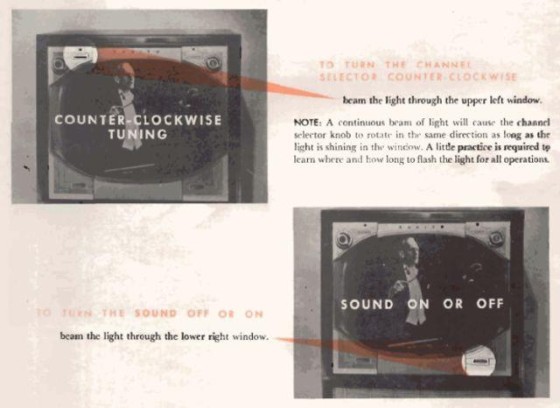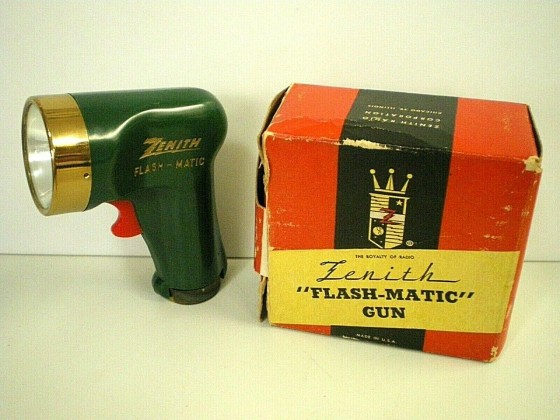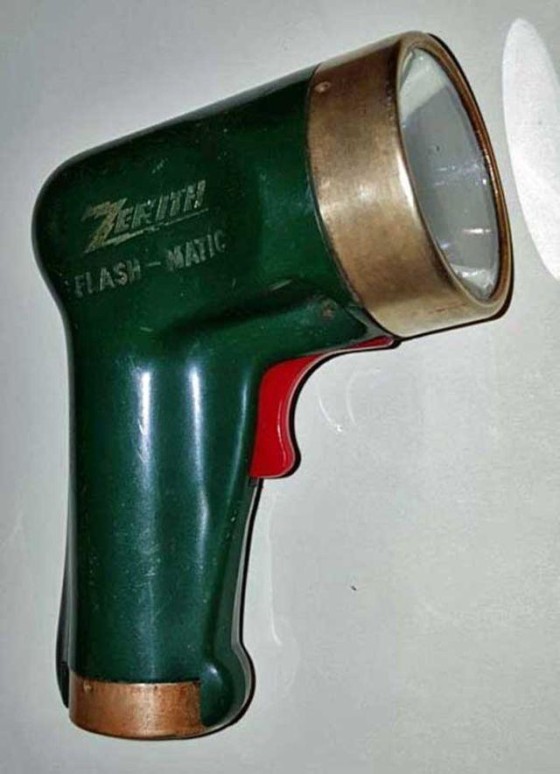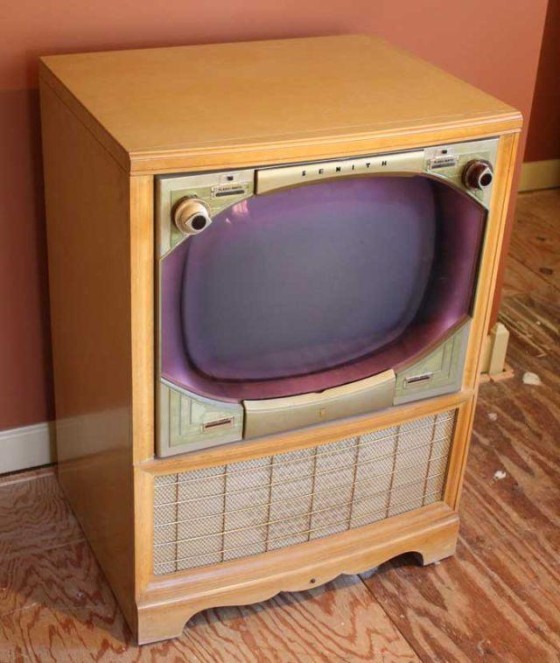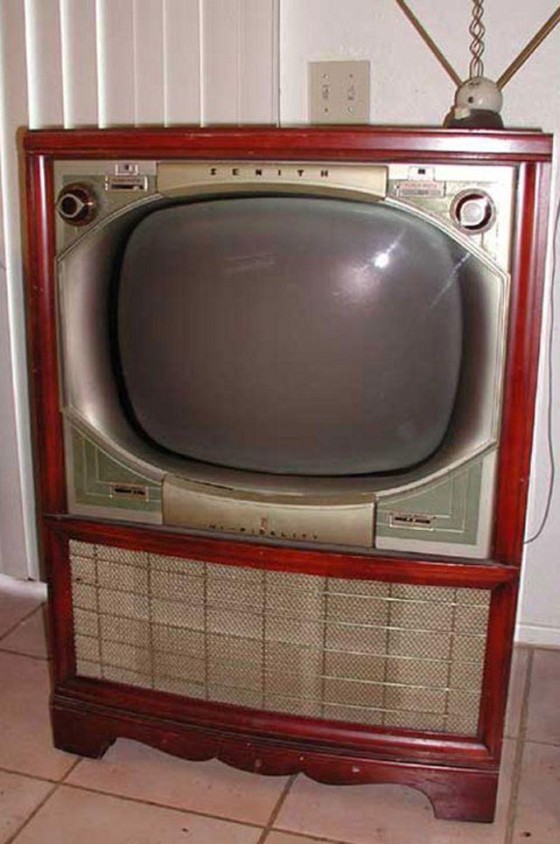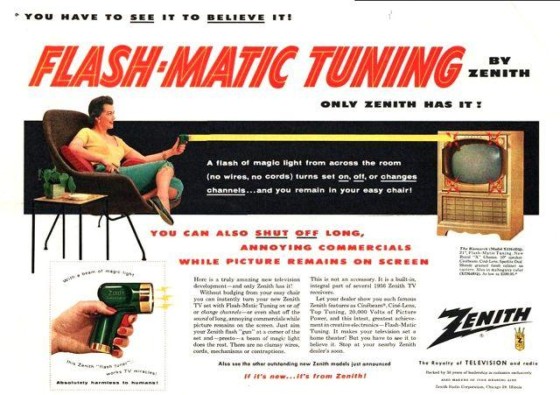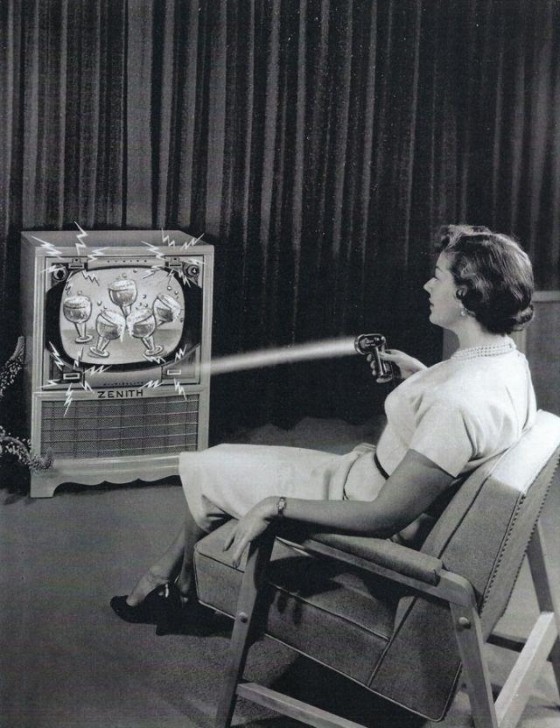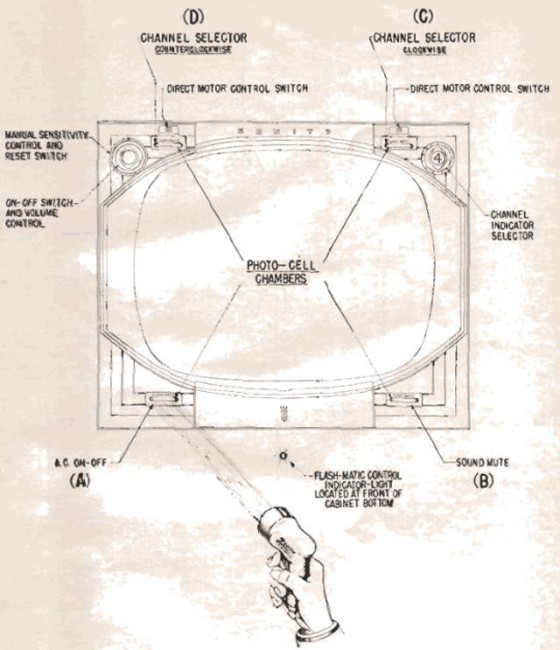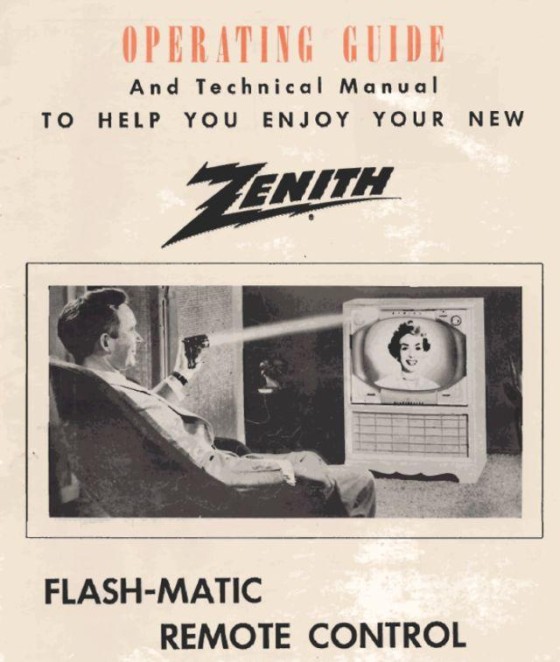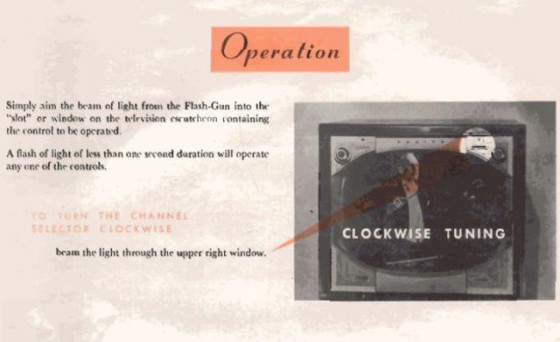Although customers liked having remote control of their television, they complained that people tripped over the unsightly cable that meandered across the living room floor. Zenith engineer Eugene J.Polley invented the "Flash-Matic," which represented the industry's first wireless TV remote. Introduced in 1955, Flash-Matic operated by means of fourphoto cells, one in each corner of the TV screen.
The viewer used a highly directional flashlight to activate the four control functions, which turned the picture and sound on and off and changed channels by turning the tuner dial clockwise andcounter-clockwise.
Flash-Matic pioneered the concept of wireless TV remote control, although it had some limitations. It was a simple device that had no protection circuits and, if the TV sat in an area in which the sun shone directly on it, the tuner mightstart rotating.


